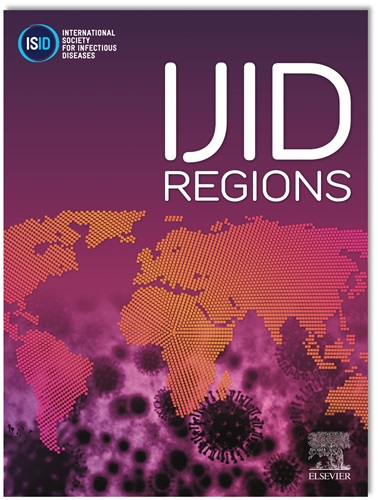解除COVID-19非药物干预措施后前两个季节全球流感流行特征分析
IF 4.8
2区 医学
Q1 INFECTIOUS DISEASES
引用次数: 0
摘要
目的:由于非药物干预措施,COVID-19大流行严重扰乱了全球流感季节性格局。本研究旨在描述COVID-19 npi解除后前两个季节的流感季节性特征,并评估大流行之前,期间和之后的变化。方法:我们分析了来自WHO fluunet的国别每周流感数据(2011-2024年),并从官方公告中收集了COVID-19 NPI时间。该研究分为大流行前、大流行和大流行后阶段,按气候带估计流行病的发病、高峰周、强度和持续时间。结果:温带国家大流行后峰值强度下降8.4%,持续时间增加1.8周,发病和峰值延迟18.5周和22.8周。亚热带国家的峰值强度下降了17.2%,持续时间减少了2.4周,发病和峰值延迟了13.5周和2.3周。热带国家的峰值强度下降了10%,持续时间减少了3周,发病延迟了6.6周,峰值时间没有显著变化。结论:流感季节性在大流行后发生了显著变化,流行持续时间恢复到典型模式,但高峰强度仍然很低。传染病大流行后的强有力监测对于为预防和控制战略提供信息至关重要。本文章由计算机程序翻译,如有差异,请以英文原文为准。
Global analysis of influenza epidemic characteristics in the first two seasons after lifting the nonpharmaceutical interventions for COVID-19
Objectives
The COVID-19 pandemic significantly disrupted the global influenza seasonal patterns due to nonpharmaceutical interventions. This study aims to describe the influenza seasonal characteristics in the first two seasons after lifting COVID-19 NPIs and assess shifts before, during, and after the pandemic.
Methods
We analyzed country-specific weekly influenza data (2011-2024) from WHO FluNet and collected COVID-19 NPI timing from official announcements. The study was divided into pre-pandemic, pandemic, and post-pandemic phases, estimating epidemic onset, peak week, peak intensity, and duration by climate zones.
Results
In temperate countries, peak intensity after the pandemic decreased by 8.4 %, while duration increased by 1.8 weeks, and onset and peak were delayed by 18.5 and 22.8 weeks compared to regular seasonal pattern before the pandemic. Subtropical countries experienced a 17.2 % decrease in peak intensity, a 2.4-week decrease in duration, and delays in onset and peak by 13.5 and 2.3 weeks. Tropical countries had a 10 % decrease in peak intensity, a 3-week reduction in duration, and a 6.6-week delay in onset with no significant change in peak time.
Conclusion
Influenza seasonality shifted significantly after the pandemic, with epidemic durations returning to typical patterns but peak intensities remained low. Robust surveillance after an infectious disease pandemic is crucial to inform prevention and control strategies.
求助全文
通过发布文献求助,成功后即可免费获取论文全文。
去求助
来源期刊
CiteScore
18.90
自引率
2.40%
发文量
1020
审稿时长
30 days
期刊介绍:
International Journal of Infectious Diseases (IJID)
Publisher: International Society for Infectious Diseases
Publication Frequency: Monthly
Type: Peer-reviewed, Open Access
Scope:
Publishes original clinical and laboratory-based research.
Reports clinical trials, reviews, and some case reports.
Focuses on epidemiology, clinical diagnosis, treatment, and control of infectious diseases.
Emphasizes diseases common in under-resourced countries.

 求助内容:
求助内容: 应助结果提醒方式:
应助结果提醒方式:


